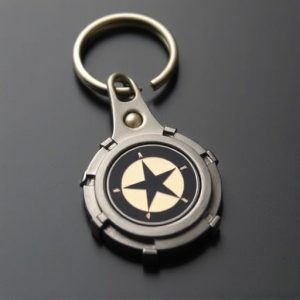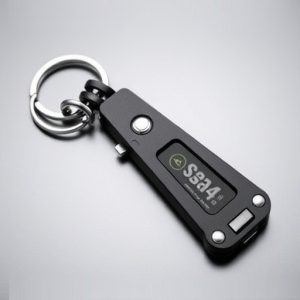Designing Compact Metal Keychain Self-Defense Tools for Maximum Effectiveness
In response to growing personal safety concerns, metal keychain self-defense tools are gaining popul…….
In response to growing personal safety concerns, metal keychain self-defense tools are gaining popularity due to their portability and discreetness. These tools must balance effectiveness and user safety, featuring ergonomic grips, controlled edge sharpness, and compact design for easy carry without drawing attention. Durability, corrosion resistance, and impact ratings are essential, with regular testing and user feedback crucial for refinement. Iterative prototyping, stress tests, and user trials lead to high-quality, safe, and effective metal keychain self-defense tools designed for everyday carry.
In today’s world, personal safety is paramount. Traditional self-defense options are often bulky and inconvenient for everyday carry. Enter metal keychain self-defense tools—compact, portable, and deadly effective. This article explores the market demand for these innovative devices, delves into design considerations ensuring both effectiveness and user safety, and details prototyping and testing procedures to validate their viability as a reliable self-defense solution on a keychain.
- Understanding the Market Need for Compact Keychain Defense Tools
- Design Considerations for Effectiveness and User Safety
- Prototyping and Testing: Ensuring a Viable Self-Defense Solution on a Keychain
Understanding the Market Need for Compact Keychain Defense Tools
In today’s world, personal safety is a growing concern for individuals across various demographics. This has led to a rising demand for compact and discreet self-defense tools that can easily fit onto a keychain. Metal keychain self-defense tools have emerged as a popular choice due to their portability, versatility, and the peace of mind they offer. These tools are designed to be small enough to carry everywhere, yet powerful enough to deter potential threats, making them an ideal solution for those seeking protection on the go.
The market need for compact keychain defense tools is driven by urban dwellers who face high crime rates and individuals living alone or with limited security measures. Traditional self-defense options are often bulky, heavy, and cumbersome to carry constantly. Keychain self-defense tools address these issues by providing a lightweight, easily accessible means of protection without compromising on effectiveness. Their small size also allows for discreet use in public spaces, giving users the confidence to defend themselves without drawing unwanted attention.
Design Considerations for Effectiveness and User Safety
When designing a metal keychain self-defense tool, effectiveness and user safety should be the primary considerations. The tool’s shape, edge sharpness, and weight distribution play crucial roles in its ability to defend against potential threats. A well-designed keychain defense tool should feature a robust yet ergonomic grip that allows for a firm grasp during use. The edge should be sharp enough to inflict substantial damage on an attacker but not so sharp as to pose a risk to the user or bystanders when not in use.
Additionally, the tool’s size and compactness are essential for ease of carry. It should fit comfortably on a keychain without adding significant bulk, making it accessible when needed. Materials used must be durable, corrosion-resistant, and impact-rated to ensure longevity and safety under stress. User safety also involves clear, intuitive instructions and a design that minimizes the risk of accidental injuries. Regular testing and feedback from potential users can significantly contribute to refining the design, ensuring its effectiveness in real-life scenarios while maintaining user safety.
Prototyping and Testing: Ensuring a Viable Self-Defense Solution on a Keychain
Prototyping and testing are pivotal stages in developing a viable metal keychain self-defense tool. The process begins with creating multiple design iterations, each refined to balance compactness, functionality, and durability. Materials like high-quality steel or aluminum are often favored for their strength-to-weight ratio, ensuring the tool remains portable without compromising effectiveness. Each prototype undergoes rigorous testing to assess its performance in simulated scenarios, such as impact resistance, edge sharpness, and ease of use.
User feedback plays a crucial role during this phase, helping refine the design further. Testing methods may include stress tests, user trials, and even lab simulations to gauge the tool’s effectiveness against various targets. This iterative process aims to identify and mitigate potential flaws, ensuring the final product is reliable and safe for its intended purpose—a compact, easy-to-carry self-defense solution on a keychain.
In response to the growing demand for personal safety, the development of a compact metal keychain self-defense tool offers a practical and discreet solution. By carefully considering design effectiveness and user safety, prototyping, and rigorous testing, it’s clear that such tools can provide peace of mind in various situations. This innovative compact keychain defense tool has the potential to empower individuals while navigating unfamiliar environments, making it a valuable addition to personal safety measures.


